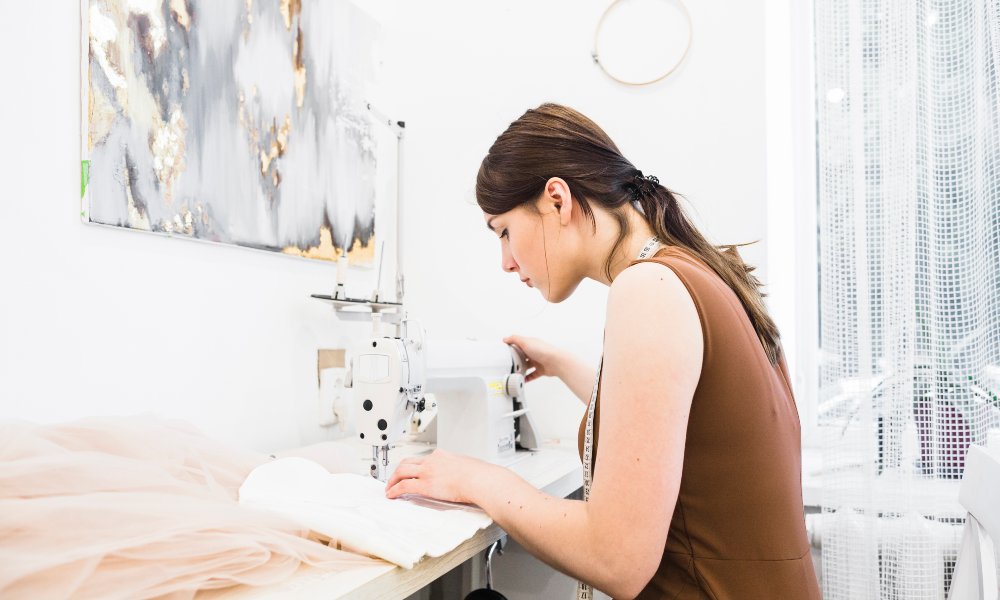Have you ever witnessed a culinary maestro effortlessly whipping up a gastronomic symphony, donning a chic apron like a sartorial suit of armor? If not, you’re missing out on a captivating culinary couture spectacle that will leave you yearning to channel your inner homemaker.
The Quintessential Apron: A Culinary Couture Icon
Apron Origins: From Functional to Fashionable
The humble apron, a garment once relegated to the realm of pragmatism, has undergone a metamorphosis, transcending its utilitarian origins to become a fashion statement in its own right. Originally conceived as a protective shroud for clothes during laborious tasks, the apron has since evolved into a culinary couture icon, gracing the bodies of domestic doyennes and kitchen Kunstler.
The Psychological Allure: Channeling Your Inner Homemaker
Donning an apron is akin to slipping into a sartorial second skin, manifesting our innate desire to embrace the homely arts. This simple garment can transport us to a bygone era, where the fragrant wafts of homemade delicacies permeated the air, and the gentle hum of a sewing machine accompanied the rhythmic dance of a homemaker’s hands.
Assembling Your Sartorial Armory
Essential Accoutrements: A Seamly Survival Kit
Before embarking on your apron-crafting odyssey, assembling a seamly survival kit is paramount. Gather your sewing machine, a trusty pair of fabric scissors, an array of needles, vibrant threads to match (or delightfully contrast) your chosen fabric, pins to keep everything in place, and a tape measure to ensure precision perfection.
Fabric Foraging: Prints, Patterns and Panoply
Embrace the kaleidoscope of fabric options that await you, each bolt holding the potential to transform a humble apron into a masterpiece. Cotton, linen, or a delightful blend – the choice is yours. Will you opt for a classic gingham print, a whimsical polka dot motif, or a bold graphic pattern that demands attention? The fabric you select will be the canvas upon which your culinary craft will unfold.
The Culinary Craftwork Commences
Pattern Perusal: Decoding the Sartorial Cartography
Armed with your sewing supplies and fabric, the next step is to procure a pattern – a sartorial cartography that will guide you through the apron-making process. Whether you opt for a free apron pattern or invest in a meticulously drafted pdf sewing pattern, take the time to familiarize yourself with its nuances, decoding the symbols and instructions that will shape your creation.
Cutting a Prismatic Path: The Fabric Surgery Begins

With pattern in hand, lay your fabric flat and begin the delicate art of cutting. Like a surgeon wielding a scalpel, use your fabric scissors to excise the pattern pieces from the material, following the grain and mind the seam allowances. Each snip of the scissors is a stroke of your culinary canvas, sculpting the very essence of your apron’s silhouette.
Cinching the Seams: Merging the Tapestry of Threads
Thread your sewing machine with a complementary or contrasting hue, and begin the intricate dance of cinching the seams. As the needle dances across the fabric, merging the tapestry of threads, envision the apron body taking shape, its curves and lines emerging like a Renaissance sculpture.
Handlebar Haberdashery: Mastering the Art of Apron Straps
The Cross-Body Conundrum: Bib vs. Waist Ties
Aprons come in myriad styles, each with its unique strap configuration. Will you opt for the cross-back apron, with its crisscrossing straps that add a touch of whimsy? Or perhaps the classic bib apron, with its neck strap and waist ties, is more your style? Whichever you choose, pay close attention to the pattern’s instructions, ensuring a seamless integration of straps and apron body.
Reinforcing the Straps: For Unrivaled Resilience
The straps are the unsung heroes of the apron, bearing the weight of your culinary endeavors. To ensure their resilience, reinforce the strap edges with a simple zig-zag stitch or, if you’re feeling adventurous, try a decorative embroidery stitch that adds a touch of personalized flair.
The Pièce de Résistance: Embellishments and Finishings
Embroidery Emblazonment: Rendering Regalia
Once the structural integrity of your apron is secured, it’s time to let your creativity shine through embellishments. Consider emblazoning the apron front with an embroidered monogram, a whimsical motif, or perhaps even a culinary-themed embroidery that pays homage to your epicurean passions.
The Pocket Paradigm: Utilitarian Vogue
No apron is complete without the utility of pockets – those fabric receptacles that hold our most cherished culinary tools and accouterments. Whether you opt for a single pocket or a pair, positioned at the waist or on the apron skirt, these functional additions add a touch of utilitarian vogue to your creation.
Stitching Summation: Apron Afterglow
As you approach the final stitches, take a moment to revel in the accomplishment of crafting your apron. This garment, borne of your hands, is a sartorial embodiment of your culinary passion, a testament to the joy of creating something unique and personal.
FAQs
What are the essential sewing supplies needed to make an apron?
To sew an apron, you’ll need a sewing machine, fabric scissors, needles, thread, pins, a tape measure, and your chosen fabric and pattern.
Can I use any fabric to make an apron?
While you can experiment with various fabrics, cotton, linen, or cotton-linen blends are excellent for aprons as they are durable, breathable, and easy to clean.
How do I choose the correct apron pattern?
Consider the style you prefer (bib, waist, or cross-back), the desired coverage (full or half), and additional features like pockets or embellishments. Free patterns and PDF sewing patterns are widely available online.
How do I reinforce the apron straps for added durability?
You can use a zig-zag stitch along the edges or embellish them with decorative embroidery stitches.
Can I add embellishments to my apron?
Absolutely! Embroidery, appliqués, or decorative stitching can add a personal touch and elevate the overall design of your handmade apron.
Conclusion
In culinary couture, the apron reigns supreme as a canvas for self-expression and a manifestation of our innate desire to create. So, as you tie the final knot on your freshly sewn apron, ask yourself: “What culinary masterpiece will I craft while donning this hand-crafted, sartorial suit of armor?” The possibilities are endless, and the journey is half the fun.
***
Main image: freepik




